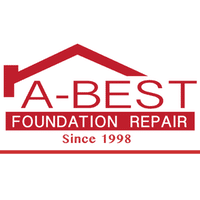Owning a home is a big accomplishment, but when you find that there is flooding in your yard or water coming in through your basement, then you’ve got an issue.
A yard drainage problem not only looks unpleasant, but when not addressed, excess water can build up around a home’s foundation and lead to foundation problems, which are extremely expensive and troublesome.
Avoid unnecessary and expensive foundation repairs and yard drainage issues with landscape drainage.
Common Water Drainage Problems in Yards
Maybe you’ve noticed that your yard is flooding or there is water pooling underneath your downspouts. The last thing you want to deal with is major flooding or a drainage issue in your backyard. But, sometimes it happens. And it’s important to fix it quickly before it makes things worse.
Here are some tips to get you through this common home issue:
What are Common Drainage Problems?
Recognizing your drainage issues is the first step to fixing it:
- Pooling
- Standing water
- Soaked or constantly damp lawns
- Swampiness
- Random overgrown patches of grass
- Fissures forming in the soil
- Water pooling under downspouts
- Water stains on your home’s foundation
- Flooding in your crawl space (as a con to pier and beam)
- Uneven flooring or foundation resettlement
These are all symptoms that you have a drainage problem.
What Causes Backyard Drainage Issues?
Backyard drain problems can be caused by soil density and type. Compacted soil, soil with lots of clay, improper backyard grading and sloping, and improper installation of landscaping features can all lead to backyard drainage issues. Broken water features or a cracked rain barrel may also be contributing to the issue.
Gutter backups and poorly maintained eavestroughs and downspouts can also contribute to water pooling in your yard.
How Do You Solve Drainage Problems?
It’s important to get your landscape drainage problem inspected by a reliable and experienced contractor, like us at A-Best Foundation Repair, so you know exactly what is going on. An experienced contractor can recommend a number of drainage solutions, like a french drain, dry wells, dry river beds, and drain piping.
How Can I Improve the Drainage in My Yard?
You can always improve the drainage in your yard, even if there aren’t any noticeable symptoms. We recommend you get a qualified landscape professional out to inspect your landscape so you can identify opportunities for improving poor drainage before it becomes an issue.
How to Fix Your Tough Backyard Water Drainage Problem
A drainage problem in your backyard can cause home damage and property damage.
Consider these surface and subsurface drainage systems to fix your yard drainage problem before it gets worse:
1. Install a French Drain
A french drain, also known as a weeping tile, is a type of landscape drainage solution that can help draw ground and surface water away from your building’s foundation. This is a popular alternative to open ditches as it is commonly a trench filled with gravel, rock, or perforated pipe.
This smart landscaping technique redirects surface water and groundwater away from your home and prevents it from pooling in places where you don’t want it to.
2. Install a Dry River Bed
Another type of lawn drainage system is a dry river bed. A dry river bed or dry creek bed is a landscape feature that simulates a creek or stream using rocks, plants, boulders, or cement.
Looking like a miniature man-made ravine, a dry creek bed is usually built in areas of your lawn that are already sunken in, like gullies or trenches.
Sometimes people use dry river beds for looks but when it comes to water drainage issues, these river beds serve the functional purpose of directing water flow away from your home.
3. Create a Dry Well
A dry well is an underground yard drain that helps to dispose of unwanted water.
Dry wells typically soak up surface runoff and stormwater, and in some cases gray water, to help prevent flooding and excessive water near your foundation.
Dry wells are cost-effective and environmentally-friendly lawn drainage systems.
4. Fix the Grading and Sloping of Your Lawn
Fixing the grading and sloping of your lawn will help fix many drainage issues. This requires that you re-grade by removing the topsoil of the problem area or adding topsoil and adjusting the subsoil by scraping away high areas and filling in low areas.
To properly re-grade your lawn, you need to put two inches of topsoil and till this together with the first two inches of subsoil, that way the soils mix together properly rather than acting as a basin for collecting water.
5. Start a Landscaping Maintenance Routine
Sometimes all that needs to be done is to implement a landscaping plan. You can consider landscaping for drainage techniques like:
- Planting a rain garden: A rain garden is a garden that allows pools to form (especially during a heavy rain) and seep into the soil. Since this is a targeted destination for water, it’s also a good spot for growing flowers and certain rain-loving plants. It also fosters an amazing habitat for butterflies and birds, making your landscape even more beautiful.
- Planting water-absorbing plants: Certain plant species can help absorb excess water runoff in your landscape. Find native regional plants well-adapted to occasional bog conditions. Common types are red-twig, dogwoods, and willows.
- Adding in a grassy swale: This is a depression that follows a contour, allowing the excess water to channel from one place to another.
6. Implement Hardscaping
Hardscaping, or adding paving materials, is another great drainage technique. Adding in paving materials with small gaps that allow water to soak down into gravel layers underground, keeps the top surface dry and eliminates runoff.
It also allows water to sink into the soil and away from your lawn, giving you more control over where your water goes.
Driveways and walkways can be constructed with pervious pavers that never puddle due to the water percolating through. Consider concrete, pervious, and plastic pavers.
7. Corrugated Plastic Tube Drain Pipe
A cheap and fast approach to lawn drainage can be adding corrugated plastic tubes, which sit over your downspouts and pull water further away from your foundation and your home.
This can help to keep water from pooling at your foundation and ruining the grading of your home right at the base of the house. These tubes can be buried within the landscape so that they look better and are still economical and effective.
Special Note: It’s also important to mention that regardless of proper drainage systems, you should also clean your gutters regularly. Water will flow over the edges and pool up if debris such as leaves, pine needles, or sticks are blocking the water flow.
Need to Fix Drainage Problems in the Houston Texas Area?
Drainage problems are common but they can lead to much bigger foundation problems and the need for leveling your Houston home.
Luckily the professionals at A-Best Foundation Repair can relieve your drainage issues. With a french drain catch basin system installed in your Houston home, you can reroute water away from the downspouts and foundation of your home, prevent soggy and pooling water, and protect the value of your home.
Don’t wait any longer. Reach out to us at A-Best Foundation Repair for a free quote.




